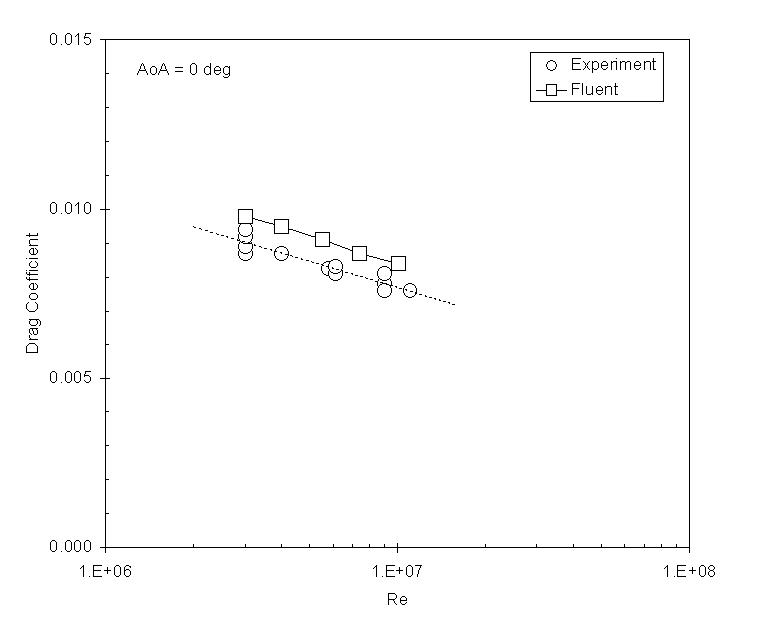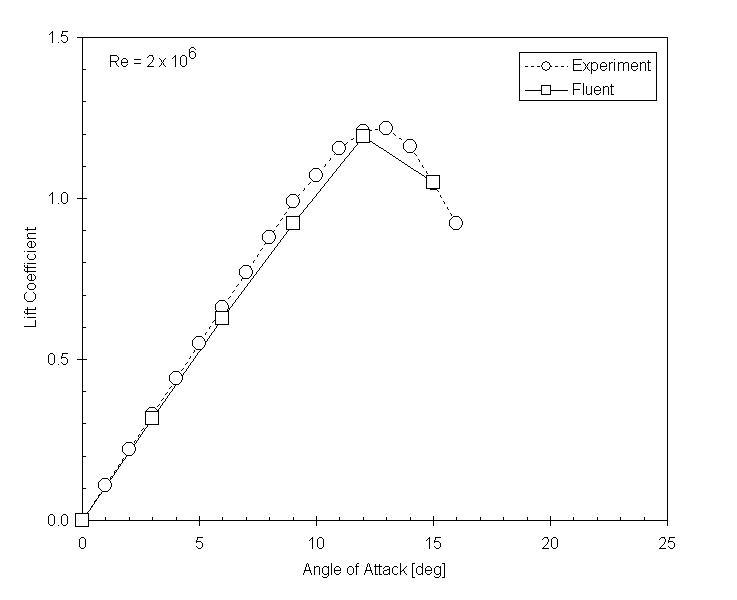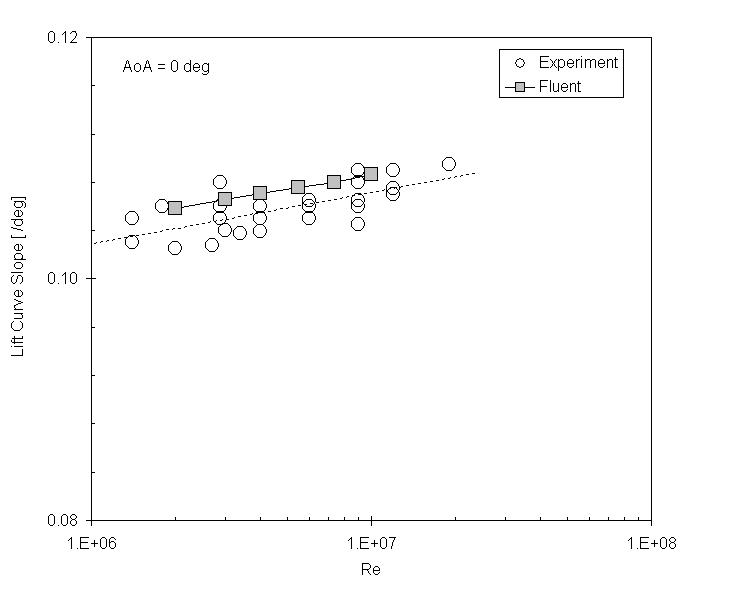NACA0012 airfoil
From CFD-Wiki
Contents |
Introduction
The NACA 0012 airfoil is widely used. The simple geometry and the large amount of wind tunnel data provide an excellent 2D validation case. For this case I use the Spalart-Allmaras turbulence model.
Mesh

The mesh is a 30,000 cell C-grid. The width off the first cell at the foil boundary is 0.02 mm. At Re = 3e6 this results in a wall y+ = 1.3 ± 0.4 . The mesh shown is for an Angle of Attack of 6 degrees.
Drag Coefficient

The drag coefficient at zero Angle of Attack depends on the Reynold's number. The experimental data is for an airfoil with a trip wire that forces the experimental boundary layer to be completely turbulent.[1] This corresponds to the Fluent model, which has an active turbulence model over the complete airfoil.
Lift Curve

The lift coefficient depends on the Angle of Attack. For Re = 2e6 I compare the lift coefficient to experimental results.[2]
Lift Curve Slope

The initial slope of the lift curve depends on the Reynold's number. Here I compare the lift curve slope to experimental results.[1]
References
1. W. J. McCroskey, A Critical Assessment of Wind Tunnel Results for the NACA 0012 Airfoil, NASA Technical Memorandum 10001 9 (1987)
2. L. Lazauskus, NACA 0012 Lift Data
